The children’s festival “Sinterklaas” hits the Netherlands at the end of November until early December. Can you spot Sinterklaas on his horse? And more importantly: have you tried all the sweets?
If you visit the Netherlands in the second half of November and the first five or six days of December, you might encounter “Sinterklaas” and his “black peet” (or rainbow peet or smudged peet) on the street. It starts with their arrival by boat on the first Saturday after November 11th in pretty much every city in the country (he has many helpers, because he can’t be everywhere at once). They hand out sweets to the kids and many children’s games are organized in every city. It’s worth going to the harbor of the city you are in, or to a nearby city if nothing is organized where you’re at, to watch this. Even more when you’re traveling with young kids.
Sinterklaas, a children’s festival
This marks the start of “Sinterklaas” (Saint Nicholas), a holiday many kids enjoy until the age of 7 – 9. After that they join the adults in the mystery surrounding it. For about three weeks kids get to place their shoes in front of the chimney or front door to find it filled with sweets or presents the next morning. How often a kid gets to place his or her shoe depends on the parents. Some only allow this on the weekends, in other households every day is the norm, compensating this by only placing one sweet a day in the shoes of their offspring.
Part of the ritual is that kids sing songs in front of their shoes before going to bed as to please the Saint. They’ll also put drawings or carrots for Amerigo, the horse of Sinterklaas, in their shoes (to be replaced in the refrigerator at night, or returned to the shoe with a bite mark). By now, the texts of the most popular songs are hopelessly outdated and need a lot of explanation. This is because the language used is old-fashioned and the cultural aspects mentioned are from earlier generations, no longer part of everyday life. There is a movement to introduce newer songs.
Sinterklaas’ birthday on the 5th of December (6th for some families) marks the end of the festivities. On this evening, a bag with presents mysteriously shows up in a room of the house or outside the front door. This goes accompanied by knocking on doors and adults asking the kids present whether they also heard something. Among older kids and adults poems are written (sometimes revealing old grudges) and presents are wrapped in very creative packaging, based on what the receiver likes. Many households with young kids also hire actors (or family members) to play Sinterklaas and Black Peet to visit their household for the celebrations. Companies organize events for the kids (and sometimes grandchildren) of their employees.
Black Peet controversy
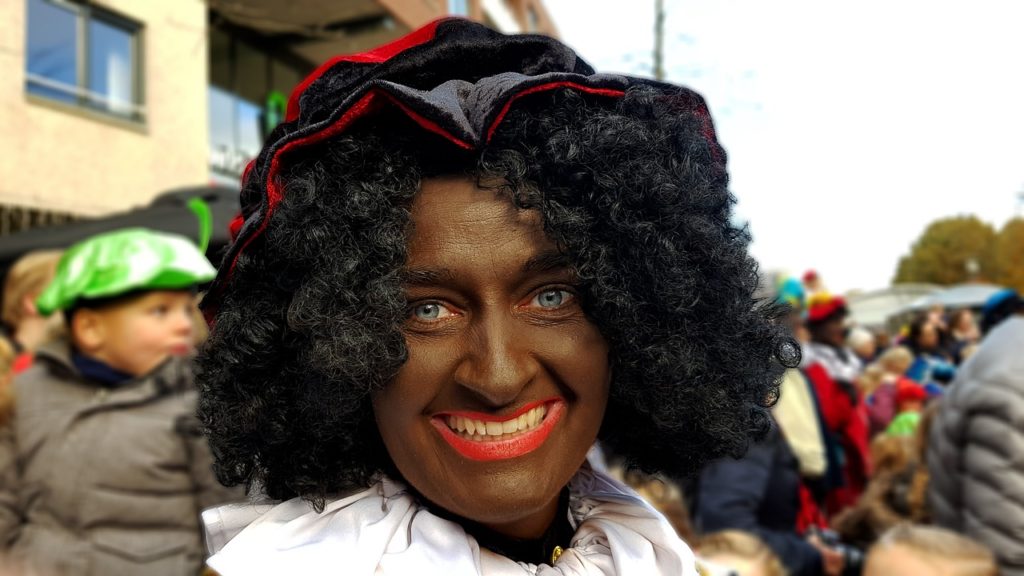
Nowadays, Sinterklaas is featured in the news a lot, because of “Black Peet” (Zwarte Piet in Dutch). Some people are linking the blackness to slavery in the past and are offended by the tradition. Because of this there has been a movement towards “rainbow peet” and “smudged peet” and it will be harder to spot Black Peet. Growing up, I, like every other kid, knew no better than that peet was black because of chimney soot. I’ll stay out of the discussion and instead tell some more about the background and the sweets.
History of Sinterklaas
Sinterklaas has been celebrated since the 13th century. At first he was alone, but in the 19th century two or more black peet joined him. The peets were like scary boogeymen, encouraging kids to obey their parents: “if you’re not a good kid, peet will put you in his knapsack and take you to Spain”). Later on they turned friendly.
The figure of Sinterklaas is based on Saint Nicholas, a Christian bisshop from the Greek Myra. Even though he wasn’t from Spain, all the children’s songs say Sinterklaas comes on his boat from Spain. Before there was Sinterklaas, there was Wodan, the Germanic god whose role he took. The horse Sinterklaas uses to walk on the rooftops is based on the horse Wodan used to fly through the sky.
Sweets related to Sinterklaas
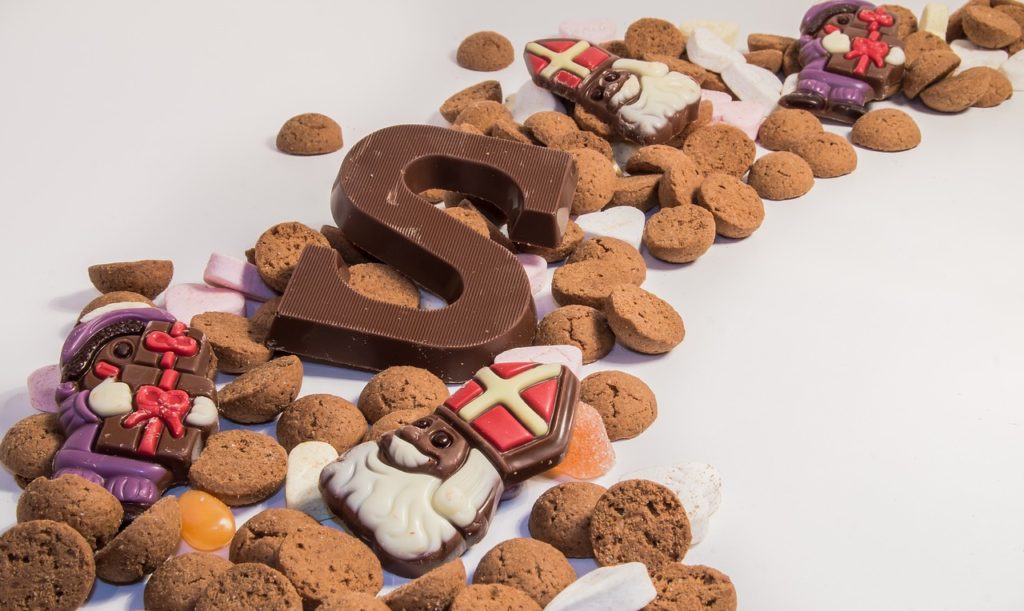
Now comes the interesting part of this post: the sweets that are specifically related to this festival. Even though the stores start selling them earlier and earlier (as early as September) you will get a (friendly) remark from people you know if you buy them before Sinterklaas arrives in the country. But that doesn’t stop anyone.
1) Pepernoten
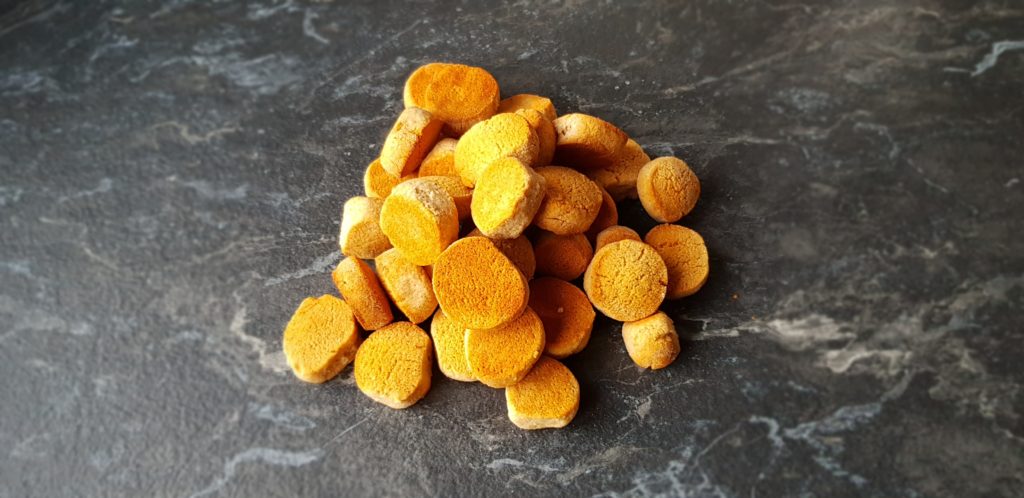
Pepernoten (pepper nuts) are my personal favorite: not to be confused with kruidnoten (spicy nuts) below. Many people use the word “pepernoten” to denote both types of sweets, but they don’t taste the same at all. I’m one of those hardcore distinction-observers.
As many other sweets in this posts, pepernoten are heavy with spices. I always bake them myself, using a pre-made mix of spices and flour from the local mill and only adding water. When you take them out of the oven they are crunchy: hard on the outside, soft on the inside. On the second day they get their bite, making them chewy. Two days after are when they’re at their best. You can make your own pepernoten by mixing rye flour, sugar, anise, cinnamon and cloves.
2) Taaitaai
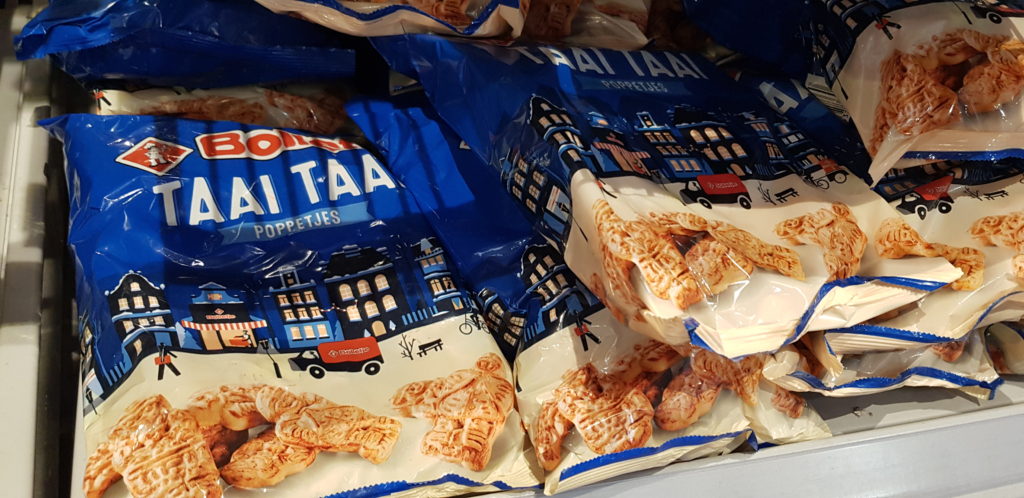
Taaitaai is made of the same ingredients (add honey) as pepernoten but shaped in the form of a figurine. They are chewy from the very first and have a great bite requiring some force to actually eat the “taaitaai” (translates to tough tough).
3) Kruidnoten
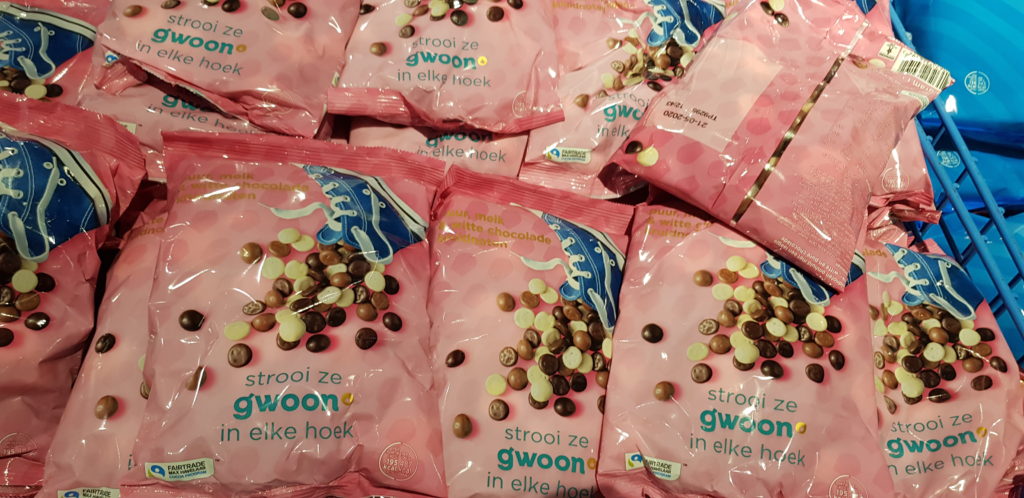
Kruidnoten taste like “Speculaas”, a spiced biscuit that is very popular in the Netherlands. The basic version contains white (wheat) flour, brown sugar, butter and a spices mix of pepper, cinnamon, ginger, cloves, cardamom and nutmeg. Nowadays you can find kruidnoten in many variants, like truffles, caramel sea salt or chocolate coating. It’s becoming an art: who makes the most interesting kruidnoten. There are even shops dedicated to different kinds of kruidnoten (called the ‘Pepernotenfabriek’).
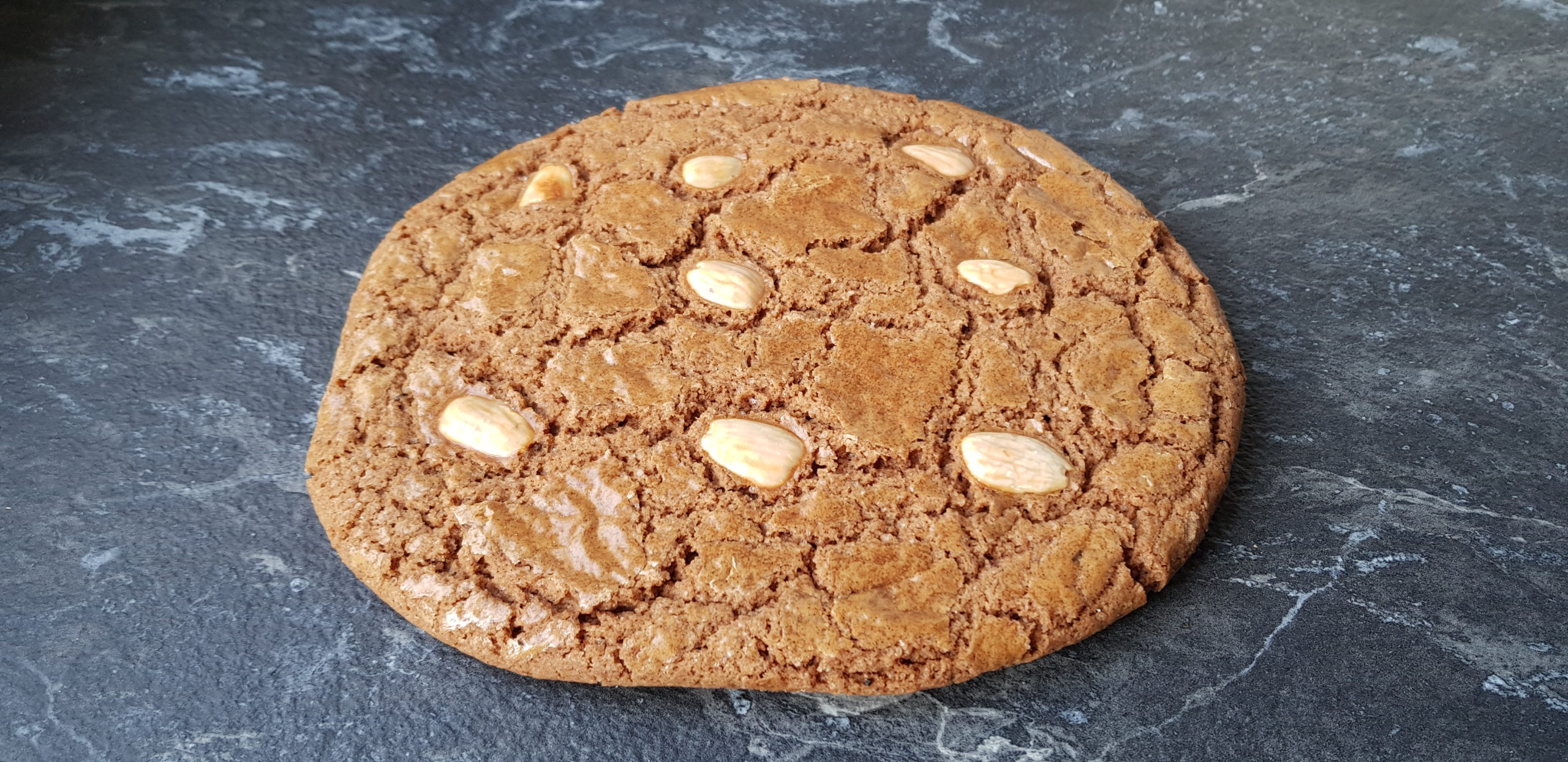
4) Chocolate letters, money, cigarettes, mice
Chocolate letters
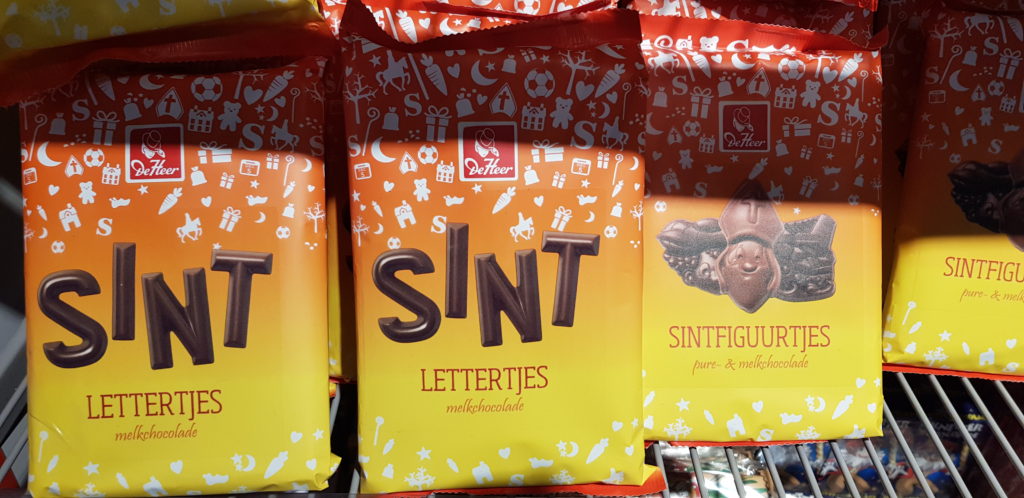
White chocolate, milk chocolate or dark chocolate shaped in all letters of the alphabet, so Sinterklaas can give you your letter in the shape of the first letter of your name. There are also deluxe letters decorated with nuts, fruit, chocolate cream and many other things.
Chocolate money
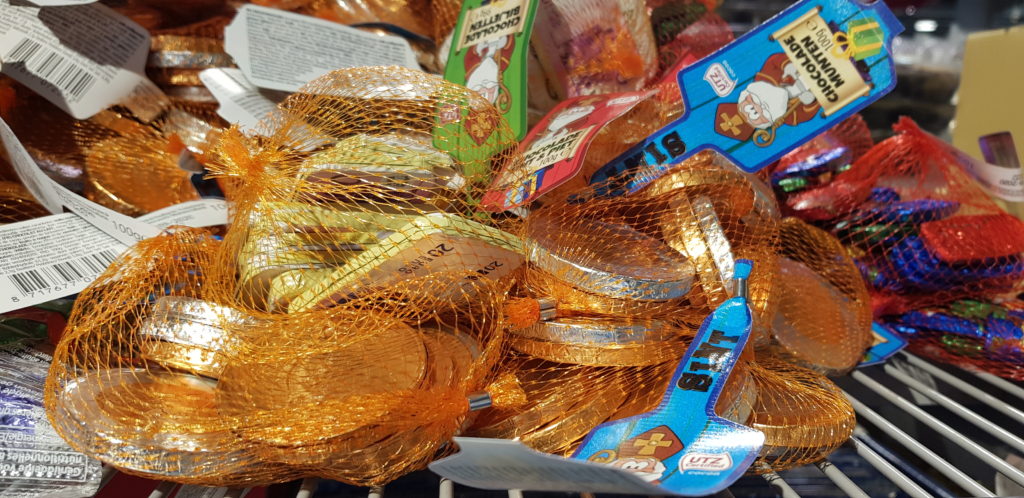
Chocolate shaped like coins and packed in gold tinfoil.
Chocolate cigarettes
Chocolate with a cigarette shape, packed in a cigarette box imitation. These are probably disappearing because of the anti-smoking campaigns.
Chocolate frogs and mice
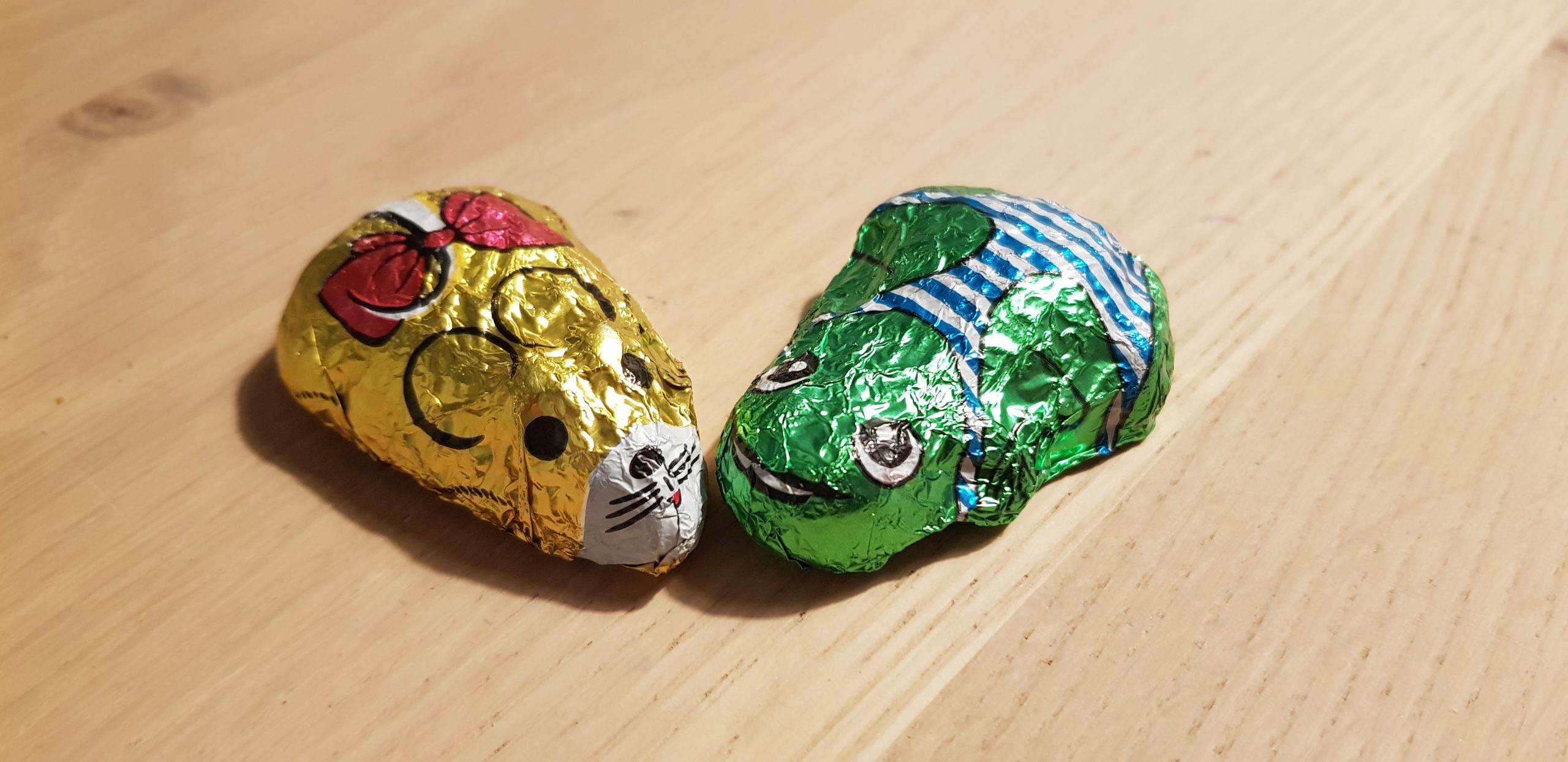
Chocolate frogs or mice filled with mint which remind you of After Eight chocolates.
5) Marzipan
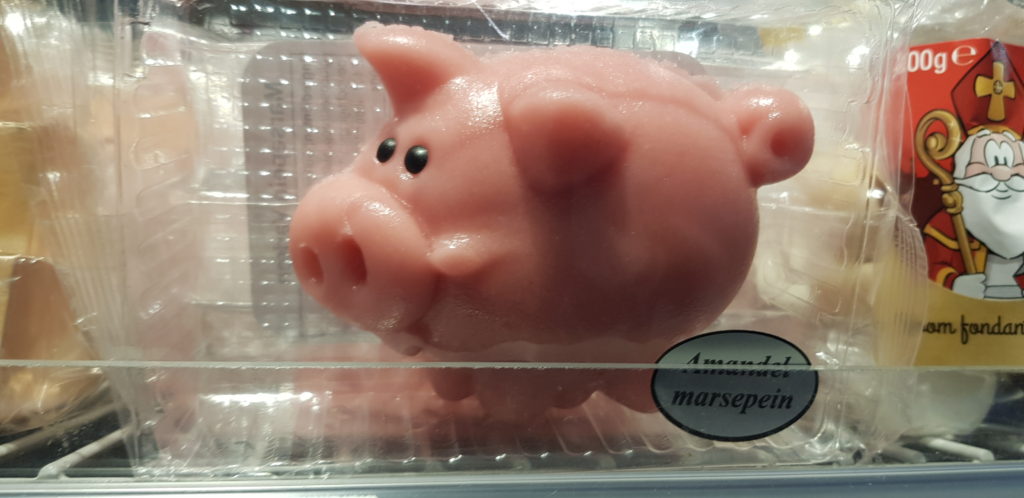
Marzipan (ground almonds, sugar and honey) shaped like a carrot, a pig and many other things.
6) Schuimpjes
Soft (hopefully) sugar candy shaped like the head of Sinterklaas or Black Peet that tastes fruity.
7) Banketletter
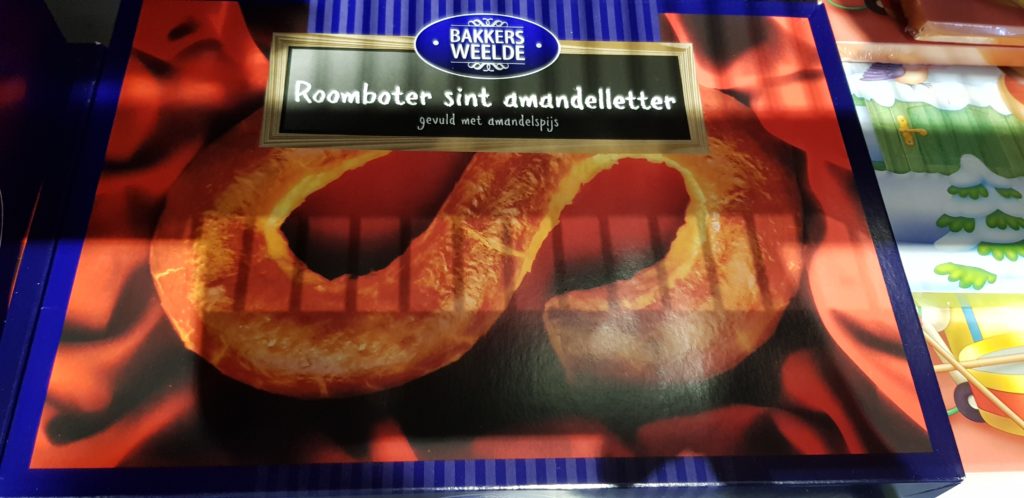
S-shaped bakery product with a puff pastry like outer material and crunched almonds in the middle.
8) Pure sugar animals
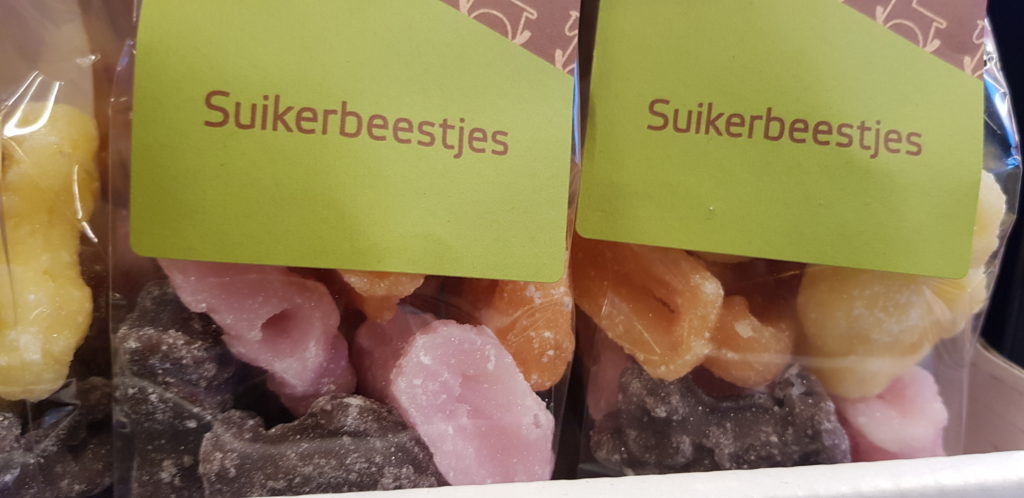
They literally taste like you’re eating sugar, but with a subtle fruit taste.
9) Strooigoed
A collective name for a mix of (often) low quality Sinterklaas sweets, containing pepernoten, kruidnoten, schuimpjes and sometimes other regular sweets.
Sinterklaas in 2019
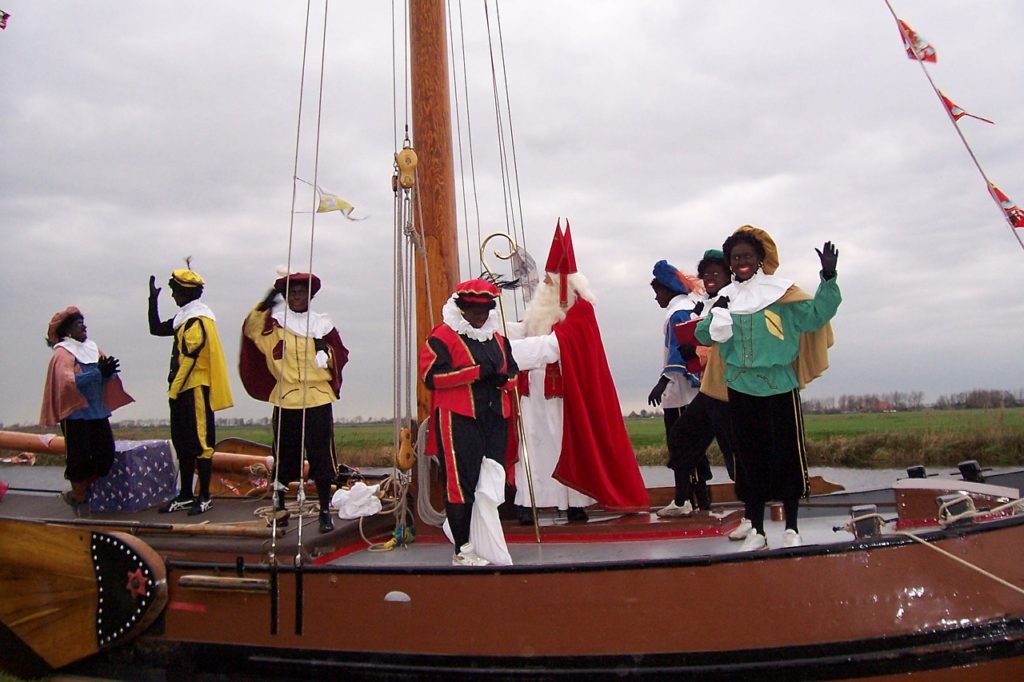
The 2019 official (with cameras) arrival of Sinterklaas will be in Apeldoorn on Saturday 16 November, but you can observe the arrival of helper Sinterklaas and Black, Smudged or Rainbow Peet in many other cities. The festival ends on Thursday 5 or Friday 6 December.
Can you spot Sinterklaas and his Black Peet this year?
Pin it for later
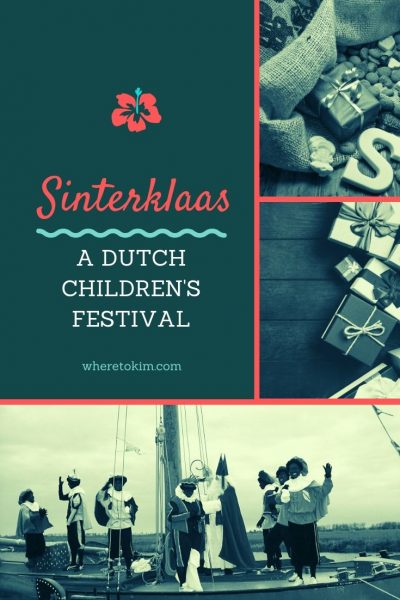







This is indeed a very informative post. Keep Writing more.
Thank you, Amish!